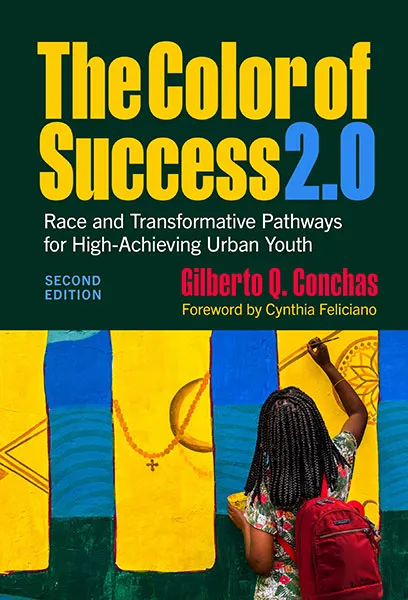Designing and Structuring Success for All Students
The second Courageous Leadership Series event featured Dr. Gil Conchas, addressing the education debt owed to young people of color who are furthest from opportunity and underrepresented in postsecondary education. Dr. Conchas shared findings from decades of research on students’ transitions to college, examining the institutional and cultural factors that shape college readiness, access, and success. His work explores how low-income ethnoracial young men excel despite systemic barriers, offering valuable insights into how to better support and diversify students’ success in higher education.
In his recent book, The Color of Success 2.0: Race and Transformative Pathways for High-Achieving Urban Youth (2024), Dr. Conchas revisited seminal research from 1999 that examined Latinx, African American, and Vietnamese students’ experiences in college preparatory academies, described in The Color of Success: Race and High-Achieving Youth (2006). In 2009, in the wake of Obama’s election, Conchas compared students’ perceptions to examine changes in high school male’s sense of social mobility, using a Racial Formation Framework (RFF) to explore the sociohistorical process by which racial identities are created, lived out, transformed, and destroyed.
- In 2009 Conchas found that all 44 young Latinx men interviewed expected to become professionals despite obstacles—their aspirations matched their expectations. Not so for the 40 young Black men interviewed, as the majority aspired to be athletes over more academically oriented careers, despite experiencing a school climate that promoted academics and college and career success.
- Many Black youth expressed a feeling of positive transformation in societies’ expectations concerning African Americans and a sense that the doors of opportunity would dramatically open for them with Obama’s election to the presidency. Nevertheless, they described the conflict between their aspirations and expectations as stemming from society’s perception of Black people, the racial dynamics they experienced in schools, and the impact of poverty and other out-of- school constraints.
- Conchas posits that schools’ interpretations of the meaning of racial identities are used to distribute cultural and material resources, which function to suppress African American boys health, motivation, engagement, and perceptions of social mobility.
- Conchas noted that school-based strategies can effectively increase student success by providing students with critical knowledge, skills and behaviors related to college, the application process, and financial aid, as well as offering intangible resources through peer and adult support systems – all key factors in promoting social mobility. However, school- based strategies alone could not shield the African American young men from the dire circumstances surrounding their lives in both 1999 and in 2009.
Dr. Conchas offered two essential recommendations, based on his research with successful young men of color, for promoting social mobility among marginalized youth:
- Design with strategies that concentrate on what works and replicate successful cultures and structures.
- Schools are most effective when they work collaboratively with other stakeholders such as community organizations (health orgs, gang prevention…).
Finally, Dr. Conchas asked us to consider how we can create educational policies and practices that challenge multiple forms of marginality, the normalization of Black male failure AND the elevation of athleticism over intellectualism.


